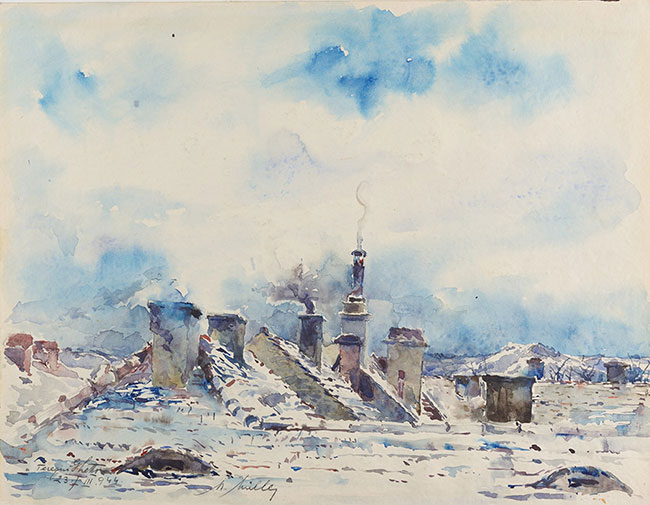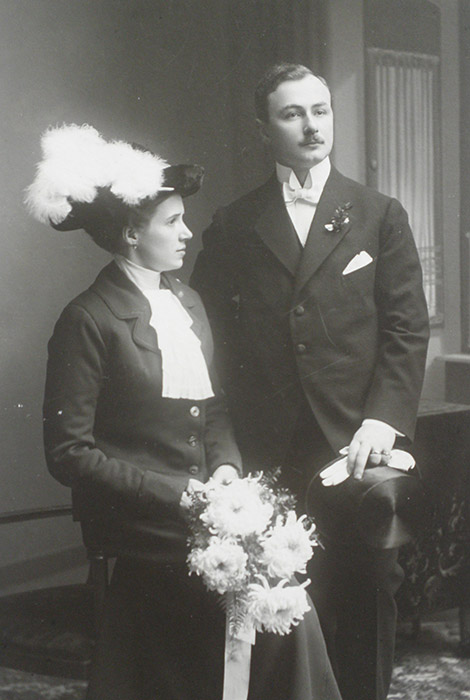
Watercolor on paper
24.6 x 32 cm
Collection of the Yad Vashem Art Museum, Jerusalem

Moritz Müller graduated from the Prague Academy of Fine Arts. He opened up a private art school and after World War I established an auction house. With the German occupation of Prague in March 1939, the Nazis shut down the auction house and looted the artworks. Müller was then forced to work for the Prague Jewish community as an appraiser of works that had been confiscated by the Nazis. In July 1943 he was transported to the Theresienstadt ghetto, where he worked as an orderly in Dr. Kurt Weiner’s urology department. Müller secretly drew portraits of the ill and elderly patients in the hospital barracks, inscribing identifying details and precise dates on each drawing. He also sketched barracks, courtyards, and views of daily life. Over the course of a year, Müller drew nearly 500 works, constituting a rare and valuable testimony to ghetto life. In October 1944 he was deported to Auschwitz-Birkenau, where he was murdered.